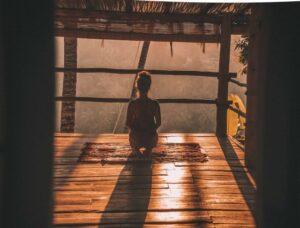Everyone essentially knows what hiking is, or do they? When you think of hiking, what comes to mind? A simple walk in the woods by yourself? A large trek through the mountains with friends? While some people may know the basics of what hiking is, most people don’t know the specifics of hiking, or the vast history it’s had in the span of human history.
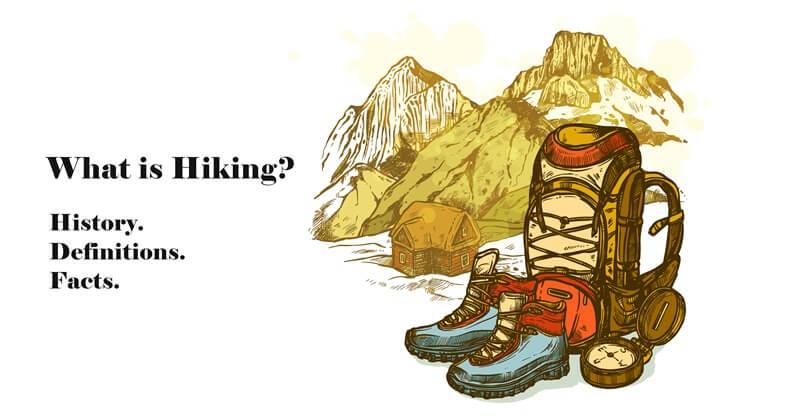
Hiking has had its place in humans’ lives since we first came about in this world, it has remained in our lives from ancient times till now. After reading this article you’ll have a better understanding of just how influential hiking is, and the complicated history of the world’s beloved pastime.
It is not just a simple walk in the woods, but an active participant in human evolution.
What is Hiking?
To get started on this in-depth analysis of hiking, we first must answer the question, “what is hiking?” There is both a simple answer, as well as a complicated one. Let’s start out with the simple answer, according to the Encyclopedia Britannica, hiking is the act of “…walking in nature as a recreational activity.”
However, it’s a bit more complicated than that. Hiking specifically consists of long walks in either the countryside or trails. A hike typically tends to take up a good portion of your day and many carry the things they need with them in a backpack. Hiking is more than a simple 10 minute walk in the woods that you spontaneously decided to do.

Some people like to hike in rough terrain such as mountain and coastal areas, and some prefer to hike in well groomed trails in the woods. The experience of hiking will differ drastically depending on the person. Some people simply hike as a side hobby that they will occasionally do and have a good time doing it. Others make hiking their whole lives, saving up to hike in popular world hiking hubs and buying expensive professional gear for their difficult treks.
Hiking often takes place in national parks that have been preserved for nature and wildlife conservation, but also as a public space that people can freely explore. Because of the fact that national parks are one of the main places people hike, there is a special sense of conservation and respecting the environment in the hiking community. After all, what makes exploring nature so beautiful is the lack of human intervention in the environment.
The Business of Hiking
In the past, there wasn’t really an industry specifically in the niche of hiking and outdoor recreational equipment. After World War 2, there was a period of time where people were experiencing both more leisure time, as well as more finances. People wanted to spend this time exploring unique places they’ve never been and there was a surplus of Army-Navy gear that was desperate to be used.

The outdoor equipment used in this era was mostly the surplus, that could withstand outdoor adventures yet wasn’t specifically designed for regular consumers wanting to explore the great outdoors. In the 60’s there started to be a growing awareness of issues affecting the environment like littering and pollution.
Brands like REI and L.L. Bean took note of this cultural shift and started selling hiking gear for true adventurers, not novices. These brands were marketing towards mountain climbers, skiers, and the like. Then came brands like the North Face and Patagonia in the late 60’s and 70’s who started selling hiking gear more branded toward novices, people who weren’t looking to do the extreme, just go for a simple hike in the woods or on a groomed mountain trail.
Hiking has become ultra-specified and the markets for selling hiking gear have exploded in recent times. Brands like Patagonia and Columbia all make millions selling clothing, shoes, and backpacks specifically for the activity of hiking. For years these companies as well as many other newcomers started innovating their brands for the average Joe, as well as keeping in touch with their former roots of offering high-end gear for adrenaline seekers.
During the 2020 pandemic, many businesses came to a screeching halt, yet outdoor companies saw an increase in profits, but why would this happen? With everyone stuck at home with no work and no school, unable to meet with friends and family indoors, humans took to the outdoors. Because of the strong rulings of not gathering indoors, people started going on more walks in the fresh air with their friends and family as that was the best they could do at the time, socially distanced of course.
History of Hiking
The history of hiking was originally one of danger and exploration. Mountains and deeply wooded areas were a place for humans to fear for their lives and avoid at all costs. Since ancient times humans have been hiking for a multitude of reasons, one being for their religion or cultural ties. A pilgrimage is an epic hiking route to a place that a person in a specific religion deems spiritual, as a holy place, or a place of historical significance to them.
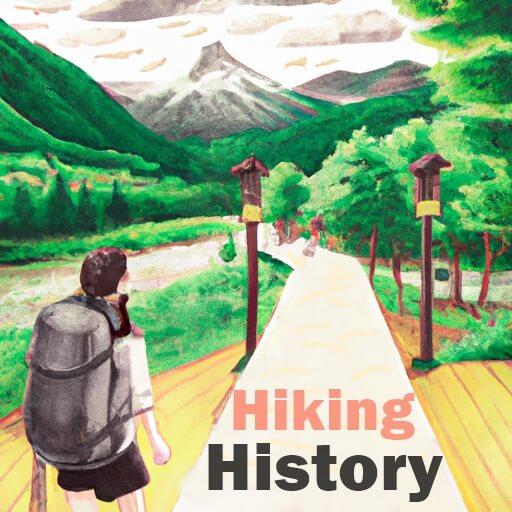
One will do this in order to find more meaning about themselves, or their religion. Pilgrimages are a common feature that have been around since ancient times in many of the world religions including: Judaism, Islam, Christianity, Buddhism, Hinduism, and Shinto. There are many pilgrimages people go on in the world, such as Adam’s Peak.
Adam’s Peak is in the highlands of Sri Lanka, the peak is about 7,360 feet high and is home to a footprint that depends on which faith you’re asking; Adam, Shiva, or Buddha. Aside from religious ties, hiking has been used for exploration.
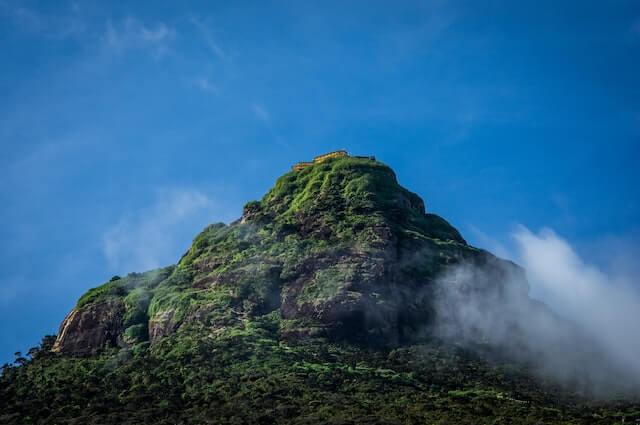
Travelers started to explore giant mountain ranges such as the Alps and the highest summit in Europe, Mont Blanc, located on the border of France and Italy. Other links to ancient hiking takes place in ancient Egypt, where there is evidence of hiking being recorded in the form of hieroglyphics.
Researchers guess that the hieroglyphics depict what looks like a group of people on a hike together, carrying baskets and supplies. Hiking was extremely important to ancient peoples and new world travelers, it was used as a way to travel and explore new lands. Usually the people were searching for things like food and other supplies, or new lands they could conquer. Hiking also provided an opportunity for physical activity and time in nature.
In the 1700’s during the Romantic Era in Europe hiking emerged as an important form of leisure for the people to enjoy the magnificent variety of landscapes around them.
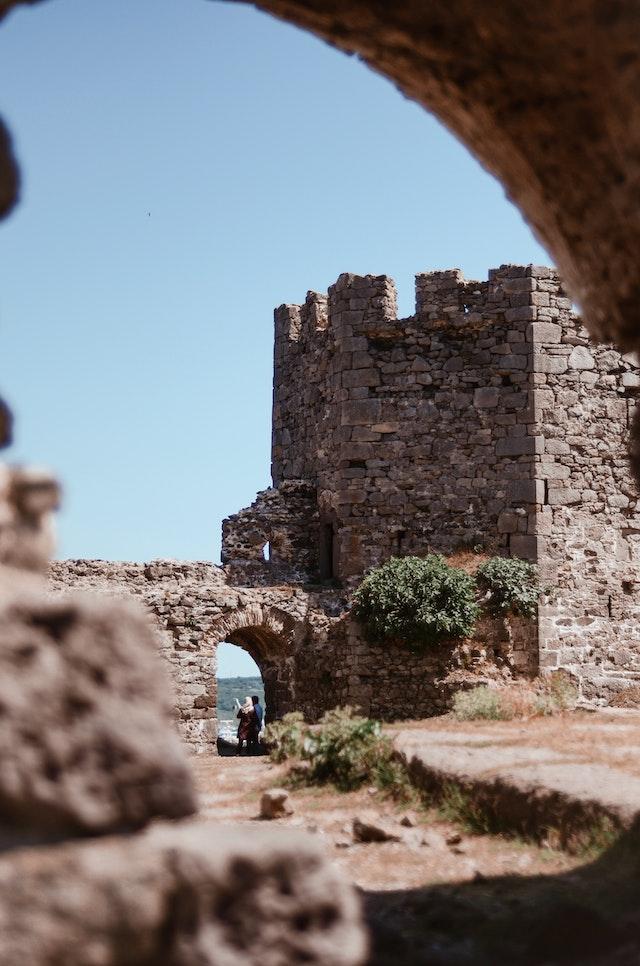
Before this era the people of Europe were plagued by literal plagues as well as poverty and hunger, so hiking was largely avoided and resting and work was more prioritized. More and more people in Europe wanted to escape the overcrowded, polluted cities that had previously brought so much turmoil in their lives.
Taking long walks in the outdoors was no longer seen as something poor people would do and rather became a signifier of wealth, as if you have time to stroll in the garden, you most likely don’t have to work. In 1871 the United States congress established the Yellowstone National Park, which was an important milestone in the world of hiking as it was America’s first ever national park.

The national park allowed millions of Americans to experience nature first hand, uninterrupted and untouched by human influence such as large buildings or roadways.
The beautiful nature in the park was only available to those who hiked it firsthand, encouraging more and more people to embark on their journey of hiking. In the 1900’s the first ever hiking guide in the United States of America was published, which aided hikers in planning their trips and educating them of the different trails and necessary items needed to successfully do it.

by: Appalachian Mountain Club
Then, in 1925, the Appalachian trail, which is one of the largest hiking trails in the world was formed. Hikers were now able to walk all the way from Georgia to Maine, allowing people to pick up hiking as more than just a hobby and turn it into a lifestyle. In the 2000’s more and more trails were being formed around the entire world, and hikers now had more high tech gadgets to help them on their hiking journeys.
Gadgets that mapped out routes and tracked hikes, was an incredible advancement in hiking that made it even more accessible to a wider variety of people. That brings us to today, the modern 2000’s. Hiking in today’s world has expanded significantly with tech advancements allowing virtually everyone to participate. Hiking trails are now marked according to their difficulty, allowing people to make easy choices on the ones they can participate in.

These days people don’t even have to be near a trail in order to research every single thing about it. There are hundreds of websites and apps that allow people to search everything they’re looking for in a trail and the site or app will provide them with the exact trail they’re looking for.
Trail sizes, hazards, completion time, and views are all readily available within a few clicks. Hiking gear is easily accessible to all, with stores like REI, and the North Face available in physical stores all around the world. Additionally, if someone isn’t near a store and wants to purchase hiking gear and equipment, everything is readily available for purchase online, any day, any time.
The Benefits of Hiking
Hiking is not only extremely fun to do, it’s also incredibly good for your mental, spiritual, and physical health. Hiking has always been thought to be good for you in general as you’re walking around in nature, what could be bad about that?
But recently, scientific studies have revealed that hiking is even better for humans than previously thought!
Read also: Science Approves: Outdoor And Greenspace Exposure Are Good For You here.
Mental Benefits of Hiking:
- The act of simply being in nature can boost your overall mood and mental health. Spending time outdoors can lead to reduced stress and anxiety, as well as a lower risk of depression. According to a study done by the researchers at Stanford University in California, in addition to the mental health benefits being outdoors can also increase your senses! Your sight, smell, touch, sound, and even taste (although you shouldn’t be tasting anything you aren’t sure of) all improve when in the great outdoors. This is due to the fact of increased focus and sensory perception as you are in your natural environment.
- The act of hiking in nature also reduces a human’s natural tendency to reminisce on negative things and play them over and over again in their head. Another study by Stanford University found that people who walked in a natural setting for 90 minutes were less likely to dwell on negative thoughts about themselves. Conversely, participants in the studies who walked in urban environments had the same negative thoughts as they began with.
- Being in nature and hiking also improves a humans ability to problem solve. One study found that walking in nature and disconnecting from all the technology constantly surrounding us improved creative problem solving abilities by 50%!
- One study has found that hiking can prevent and slow the progression of dementia. There is direct evidence that hiking can simply aid in turning back the brain.
- Another study has found that hiking helps to prevent the loss of gray matter. Gray matter helps humans to process information, and after 40 it begins a slow decline. However, hiking can help grow and promote gray matter growth and retention. Any type of exercise is beneficial in this yet hiking adds an even bigger boost. When you’re out on a trail then you are forced to use your navigational skills and memory, as well as pay attention the whole time.
Spiritual Benefits of Hiking:
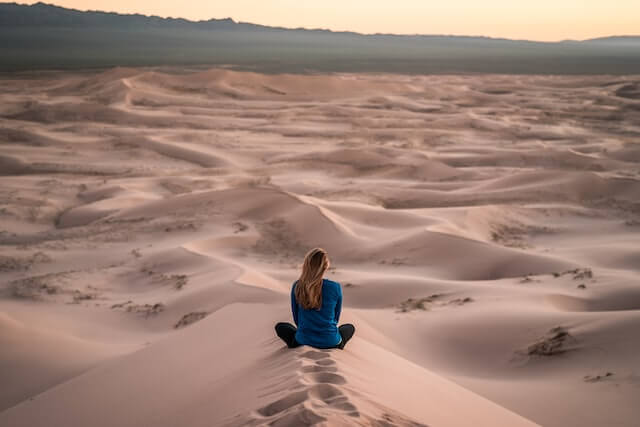
- Many hikers refer to hiking as equivalent to spiritual experience. It can help people feel one with nature, and connected to all the organisms around them.
- Hiking can be a great teacher of mindfulness. Mindfulness is all about teaching your brain to be present in the moment. It can be very hard to do for some, but hiking in nature is like a cheat code. Hiking allows you to be fully present in the now. All you need to do is pay attention to the sounds around you; your breathing, the animals, the wind rustling through the leaves of the trees.
- A hike in the woods also can provide you with a much needed break from the monotony of regular life; work, school, sleep, repeat. Each trail will provide you with new opportunities, new views, and new experiences.
Physical Benefits of Hiking:
- Hiking is great for your heart and general cardiovascular system. You don’t have to hike at a super fast speed in order to get your heart rate pumping, simply going at a light pace is enough to boost aerobic fitness and endurance. Over time your body will adjust to your pace, and with consistent hiking you will be able to go longer, and faster than previously able.
- Hiking is also great for building muscle and improving overall balance. Hiking helps build the stabilizing muscles in your legs and core, and also helps exercise pretty much every major muscle group in the body!
- Hiking can also help build bone density as it’s a weight-bearing exercise, which means your bones and your muscles have to work harder against gravity, especially if you’re walking on trails with rough terrain.
Fun Facts About Hiking
1. Since the National Trails System was established in 1965, the total mileage of trails on US federal lands has increased from 88,000 to 193,500 miles.
2. Hiking is the fourth most popular activity in the United States.
3. Switzerland has the highest density of hiking trails per square kilometer in the entire world! The country has 1.9 km of hiking trails per 1 square kilometer of land nationwide.
4. The oldest hiking trail in the United States of America is located in New Hampshire and named The Crawford Path. The Crawford Path was established in 1819 and has a total distance of around 8.5 miles.
5. The oldest hiking trail in Europe and arguably the entire world is the Via Francigena. The Via Francigena runs from Canterbury, England all the way to Rome, Italy. The trail is a total of 1,056 miles or 1,699 kilometers and takes a total of around 50 days to walk, but that varies significantly from person to person.
6. The hiking and outdoor equipment stores in the US alone have a market size of 7.1 billion dollars, with barely any decrease in market size in over ten years.
7. Hiking is referred to as many different things even in the English speaking world just depending on which country you’re located in. People in the US and Canada typically refer to it as hiking, people in Australia tend to call it “bushwalking”, people in New Zealand call it “tramping”, and people in the UK call it “hillwalking”, “rambling”, or “fellwalking”.
8. The average hiking speed for most hikers is around 2.5 miles per hour which is around 4 kilometers.
9. An Italian poet by the name of Francesco Petrarca is known as the first ever recreational hiker due to his account of hiking to the summit of Mont Ventoux in France. His brother and himself hiked up the mountain on April 26, 1336 along with their servants.
10. There are over 24 different types of hiking trails including: Access trails, backcountry trails, connecting trails, day trails, extended trails, feeder trails, etc.
Definitions of Common Hiking Terms
Trekking: Trekking is often used interchangeably with hiking but implies a significantly higher amount of difficulty, whether it be from rough terrain, rough weather, or a long book time.
Backpacking: Backpacking refers to a multiday hike where the hiker carries everything they need for the journey on their back, for example food, water, extra clothes, etc.
The Ten Essentials: The 10 essentials can differ from person to person slightly but in general it consists of: a form of navigation, a headlamp, sun protection, a first aid kit, a knife, a fire starting kit, an emergency shelter, extra food, extra water, and extra clothes.
Book Time: The book time of a hike is the estimated time it will take you to complete the hike fully.
Trailhead: The trailhead is the point where a trail stops and/or starts. Some larger trails will have trailheads states apart, while others will simply be from one end of a parking lot to another.
Blaze: A blaze is a color coated marking located on a tree that acts as a guide for hikers along the trails.
Bushwacking: Bushwacking simply means that hikers are traveling off the groomed trail through often dense foliage. Bushwacking trails aren’t super obvious to the eye and usually make the journey last a bit longer.
Herd Path: A herd path also known as a desire path, is an unofficial footpath that has been formed over time by hikers. It often presents a separate trail that avoids an obstacle, or offers a shortcut.
Thru-Hikes: A thru-hike is an end to end hike along the entire trail. They are typically extremely long and can expect to walk at least 100 miles a week, for example on the Appalachian Trail (AT).
The Big Three: The big three are the heaviest pieces of essential gear you need to take with you on your hike. The big three consists of the sleeping bag, the backpack, and the shelter.
Wilderness Area: A wilderness area is a natural area specifically designated for only wildlife, it is highly protected and humans are not allowed to explore it.
Leave No Trace: “Leave No Trace” is a popular saying amongst hikers and nature lovers alike, it essentially means that when you’re visiting a natural area you should leave no trace that you were even there, such as litter, or moving around natural objects where they don’t belong.
Resources:
- Guide to paths in the White Mountains and adjacent regions by Appalachian Mountain Club.
- Boy Scouts of America. The Official Handbook for Boys. Published for New York: Doubleday, Page & Co., 1913
- Federal Focal Point in Outdoor Recreation. Washington DC: US Government Printing Office
Frequently Asked Questions
Q: Is hiking suitable for beginners?
A: Yes, hiking is great for beginners as it allows them to connect with nature, enjoy scenic views, and improve their fitness. Many trails cater to varying skill levels, so beginners can choose routes that match their abilities and preferences. Start with shorter and less challenging trails to build stamina and confidence. Gradually increase the difficulty level as you gain experience. Research and choose trails that align with your fitness level, considering factors like elevation gain and terrain. Wear appropriate footwear and clothing, pack essential supplies, and follow safety guidelines. Hiking is a rewarding way for beginners to explore the outdoors and discover new trails.
Q: How do I choose the right hiking trail for my skill level?
A: To choose the right hiking trail, consider your skill level and experience for an enjoyable and safe journey. Evaluate the trail’s difficulty level, distance, duration, and elevation gain. Beginner-friendly trails are well-marked with gentle inclines and shorter distances. Advanced trails may involve steep climbs, rugged terrains, and longer distances. Research trail conditions and potential obstacles. Assess these factors to select a trail that aligns with your abilities and ensures a safe experience.
Q: What essential items should I pack for a hiking trip?
A: Essential items for a hiking trip include appropriate footwear, layered clothing, a properly sized backpack, water, snacks, a first aid kit, a map, and a compass. Wear comfortable hiking boots or shoes with good traction and ankle support. Dress in layers to adapt to changing weather conditions. Pack enough water and nutritious snacks. Bring navigation tools and protect yourself from the sun. Include a first aid kit, emergency items like a whistle and a lightweight emergency blanket, and adjust your packing list based on trail requirements and weather conditions.
Q: What safety precautions should I take while hiking?
A: Safety is crucial while hiking. Inform someone you trust about your hiking plans. Stick to marked trails and avoid unknown or restricted areas. Pack adequate supplies and be prepared for unexpected delays or emergencies. Stay aware of weather conditions and adjust plans accordingly. Practice wilderness etiquette and leave no trace. Consider hiking with a companion or in a group, or inform someone about your plans if hiking alone. By following these precautions, you can have a safe and enjoyable hiking experience.




